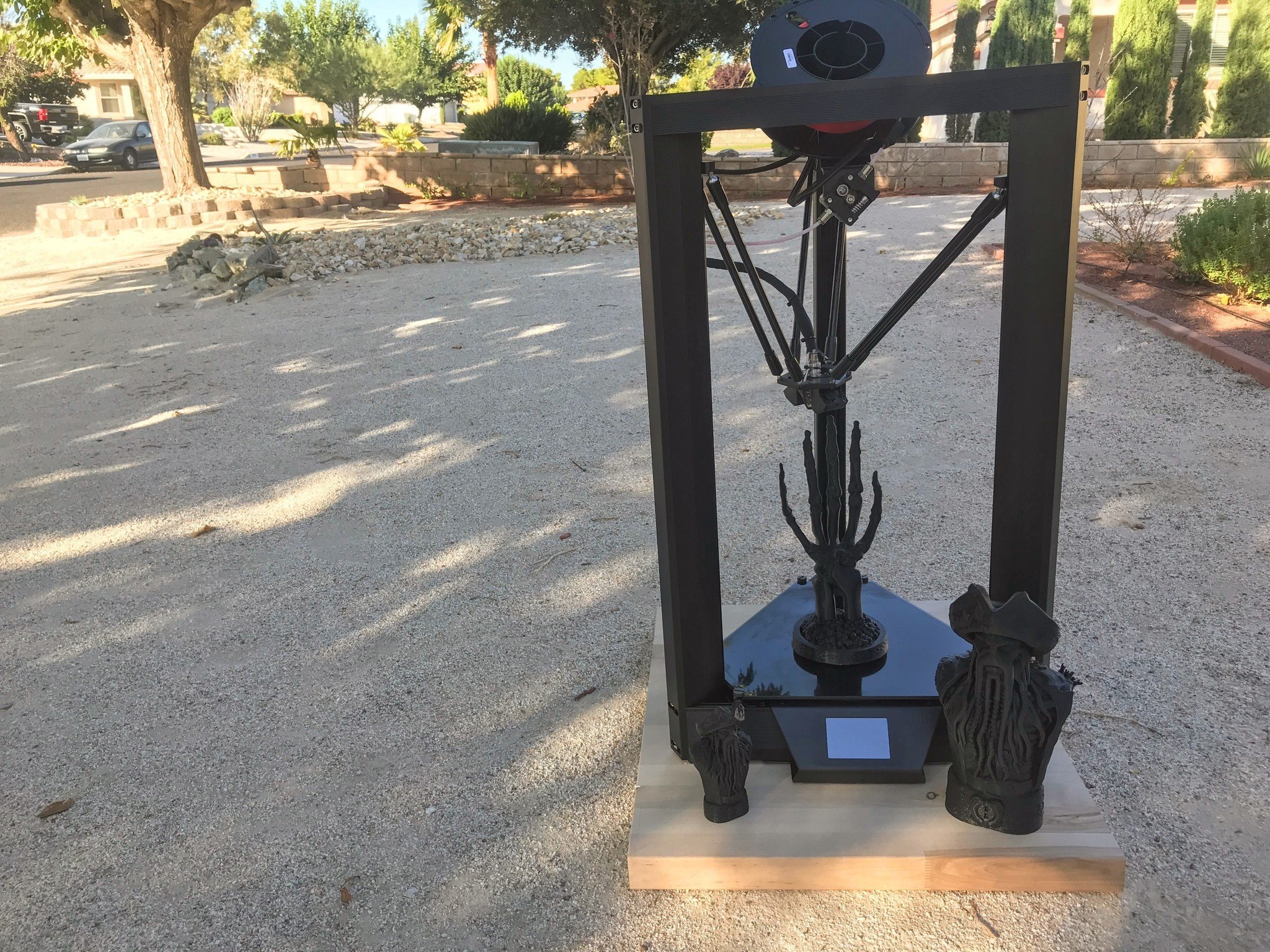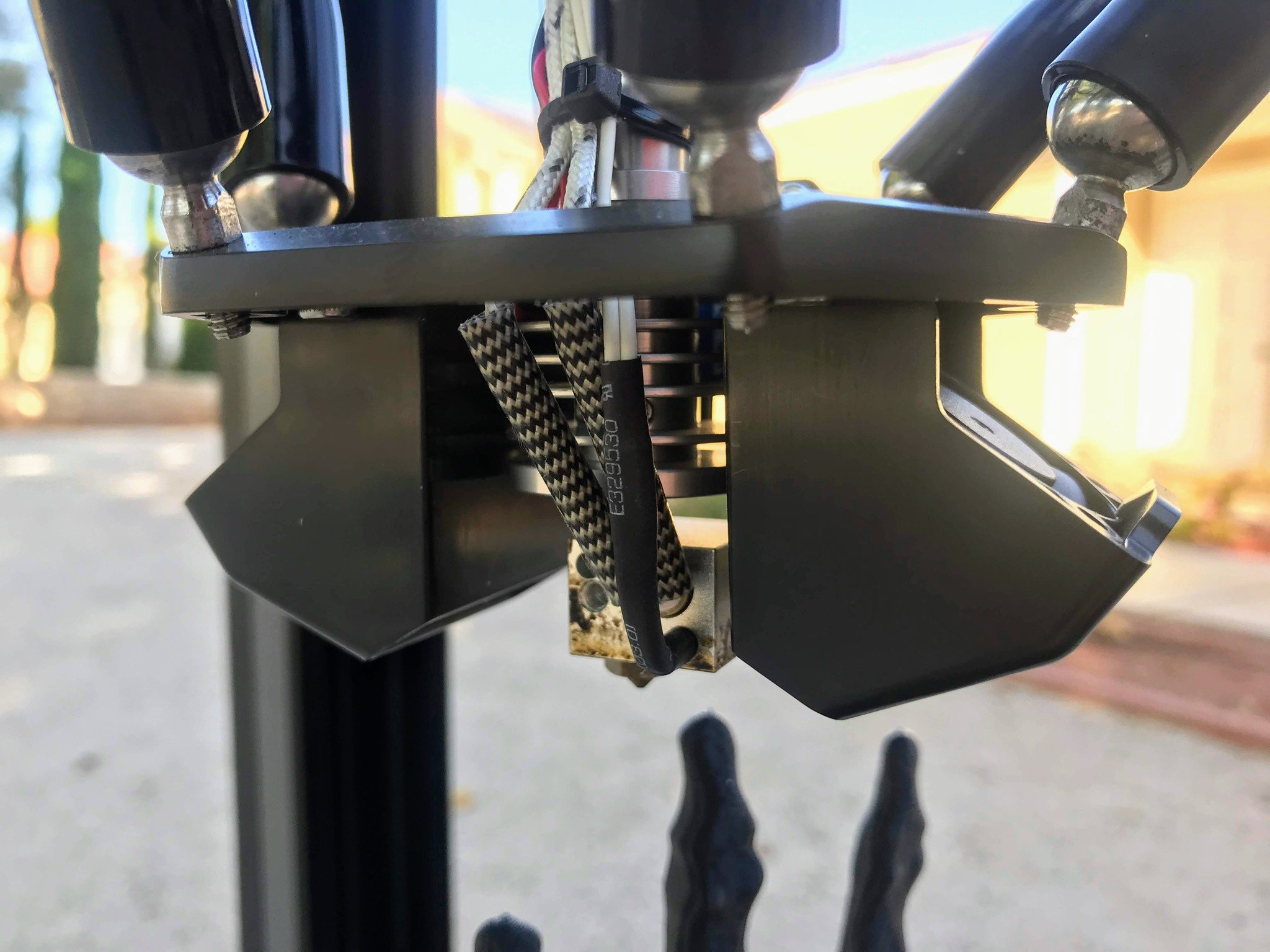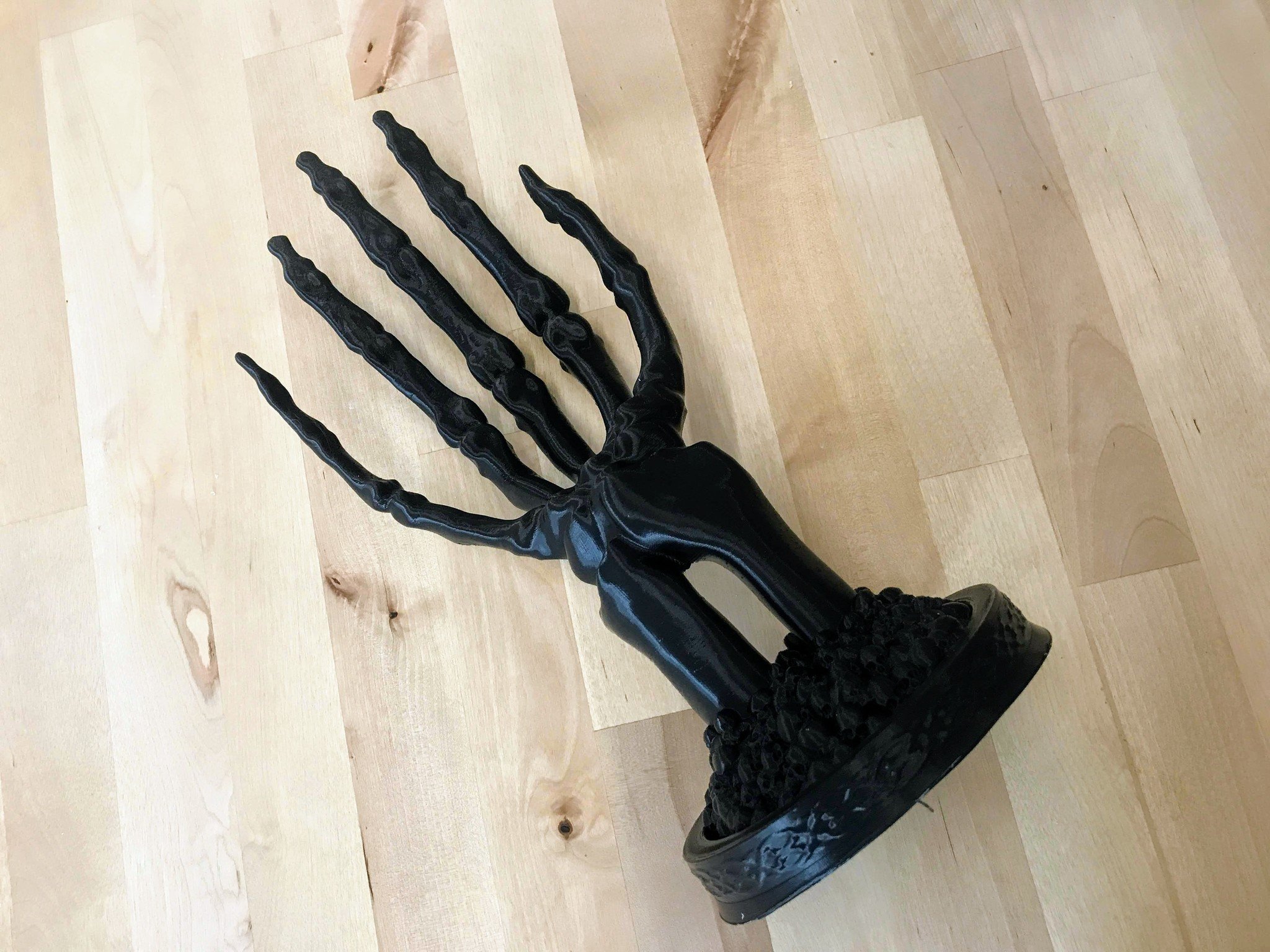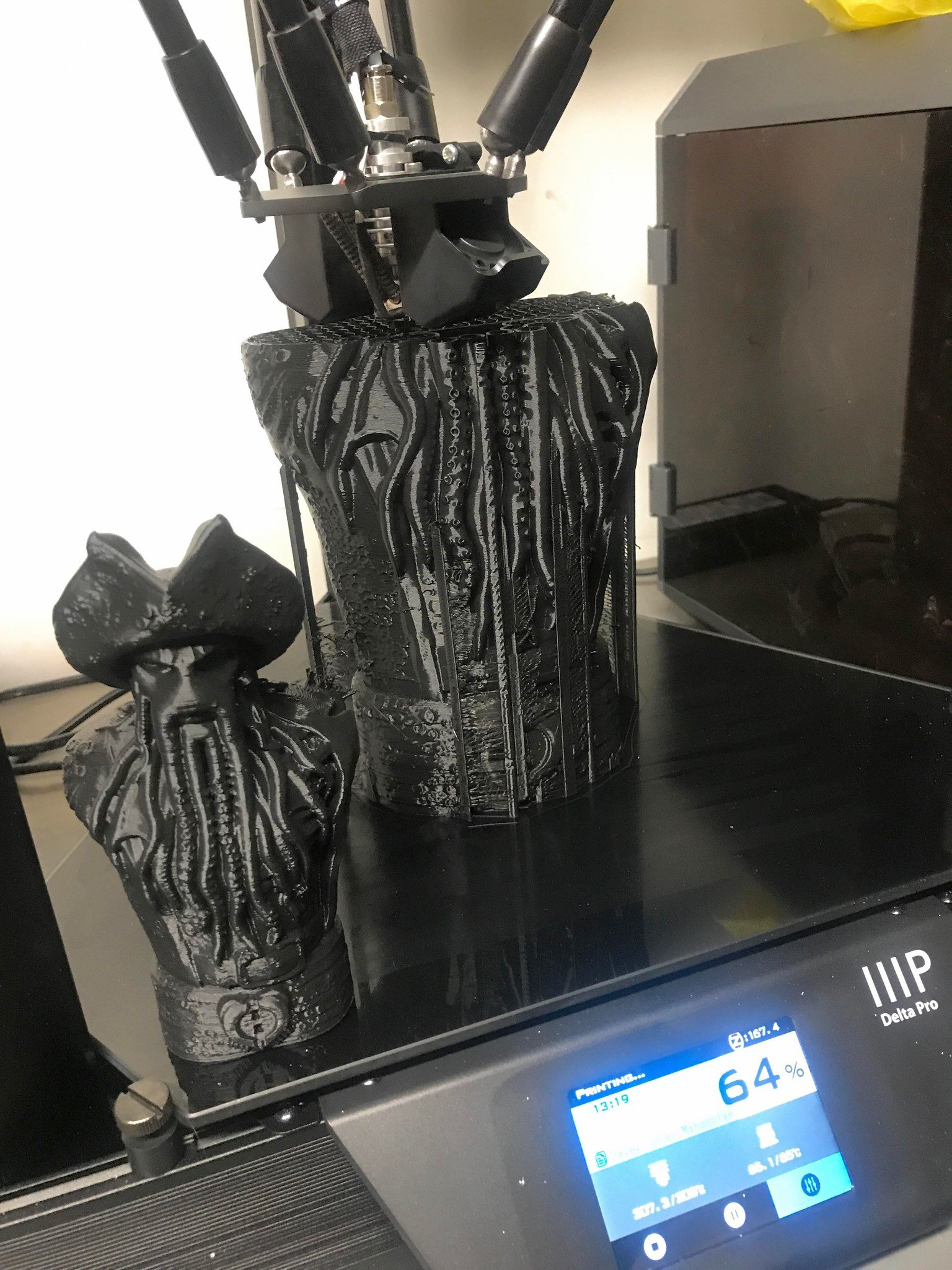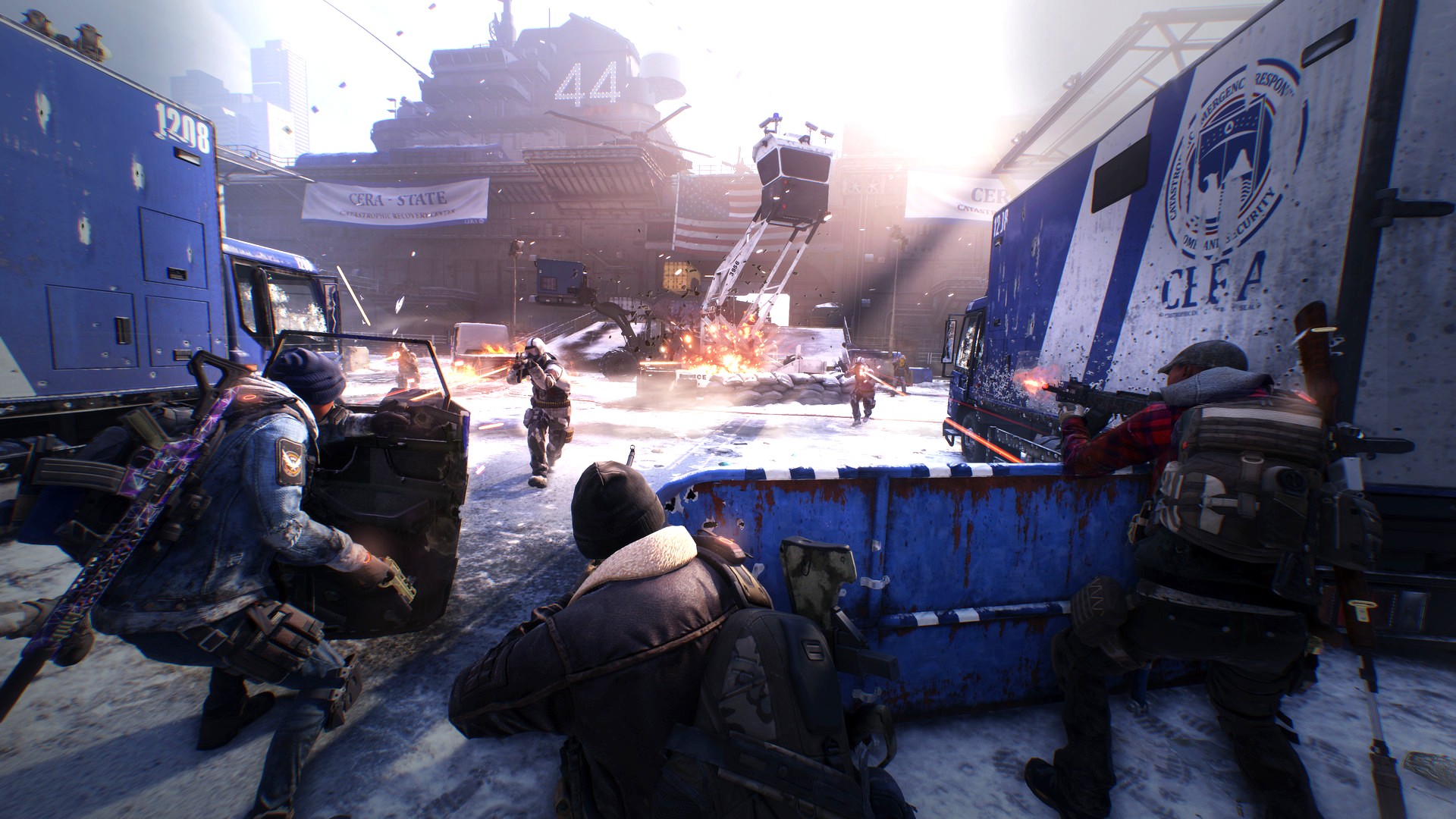Monoprice is generally known in the 3D printing circles as makers of inexpensive printers for the masses. The Delta Pro, however, is aimed at a more "Professional" crowd than its regular hobbyist group.
The big question though is who are these "professionals" and would you, a hobbyist want one anyway? Let's see if we can answer those questions.
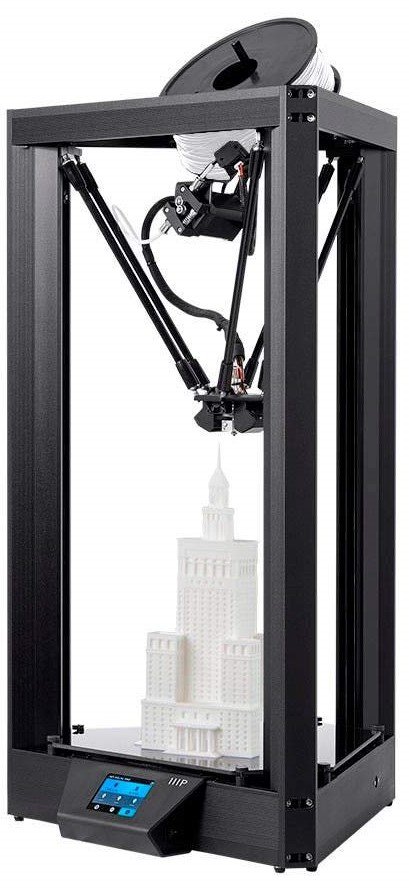
$1,200Bottom line: The Delta Pro is a premium quality machine that has some fantastic features. The print quality is fantastic, and it can print oversized models well. I just wish Monoprice took the time to supply decent slicer profiles.
Pros
- Large build area
- Some nice advanced features
- Over-constructed
Cons
- High price tag
- Slicing software is not up to par
What you'll love about the Delta Pro
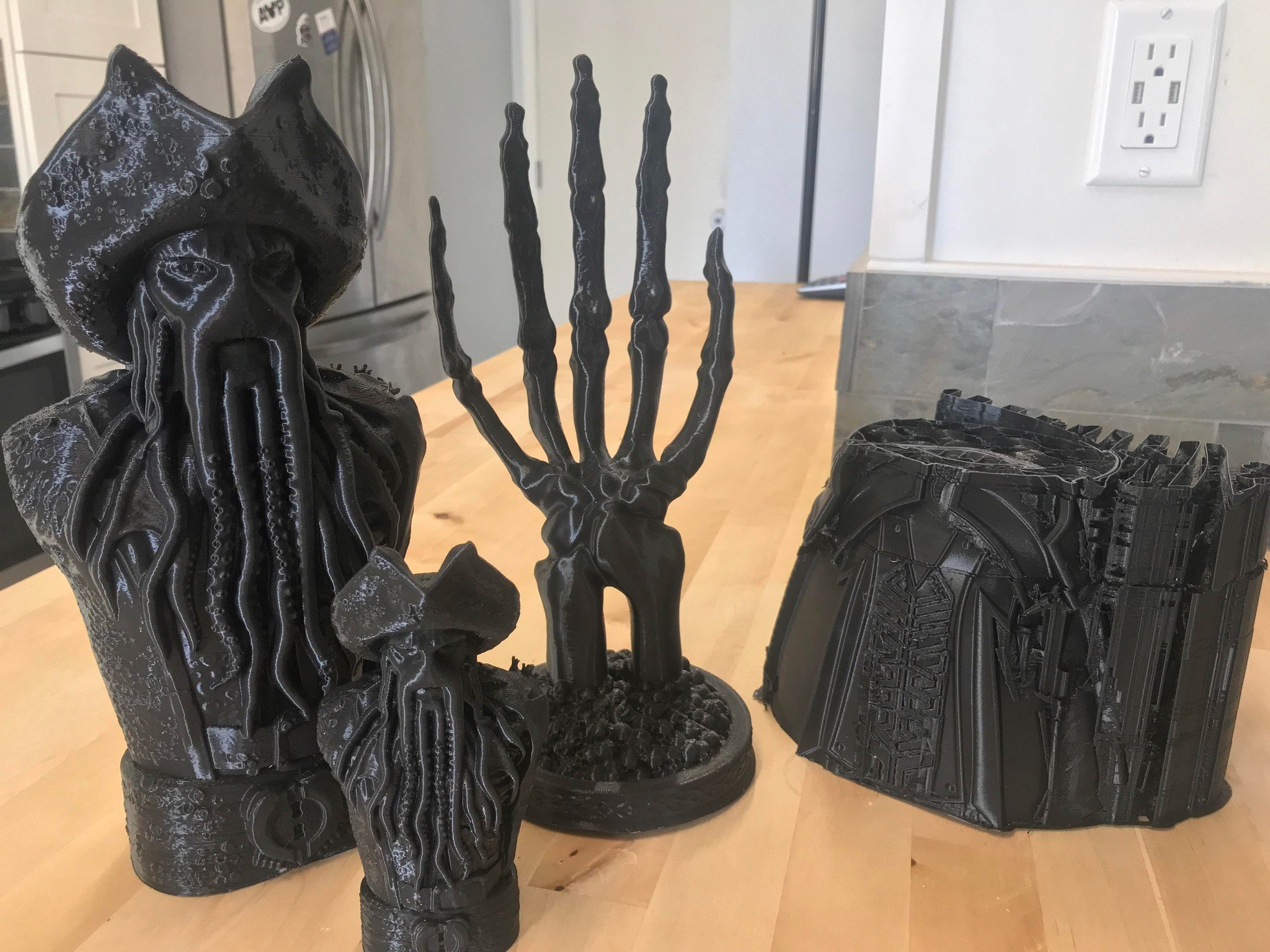
In case you didn't know Delta printers are a little different to your standard FDM printer. Instead of stepper motors to move a gantry up and down or backward and forwards, a delta uses them to move three rigid arms. This changes the way Deltas lay down layers and reduces a lot of the issues you can get on traditional FDM printers.
The Delta Pro has an impressive 270mm circumference and a 300mm Z height, meaning you can print some truly whopping prints.
Z-wobble, caused by weight on the Z gantry, is almost non-existent on a delta, and the layer lines are smoother, even at large layer heights. One consequence of using these three arms to drive the printer is the shape of the build plate. Because the delta is often triangular in shape, the bed itself is either a triangle or a circle. This means your print area is a circumference and a Z-height instead of a Z, X, and Y size.
The Delta Pro has an impressive 270mm circumference and a 300mm Z height, meaning you can print some truly whopping prints. In fact, almost every print I made on the Pro was at the maximum size possible. If you are looking to buy a big printer you really want to know how it prints large objects right?
Setting up the Delta Pro was incredibly easy. The arms are connected with heavy-duty magnets which allow them to move freely in their sockets with almost no friction. It also means they snapped together incredibly easily. The printer head was also easy to set up and as a great swappable hotend, making replacing parts or cleaning nozzles a breeze.
Once the printer is setup, there is a bed leveling system that uses a detachable probe. This is a little cumbersome but hopefully not something you will have to do very often. The Delta Pro is solid to the point of over-engineered and as such is unlikely to need bed leveling very often.
All the latest news, reviews, and guides for Windows and Xbox diehards.
The models I have managed to print on the Delta Pro have been pretty great. There is a lot of tweaking to do to get them perfect, especially using the included Slicer (more on that later) but the Pro does give excellent print quality at a great speed.
I really went all out with this printing the models from Kijai Designs and Fotismint at the largest scale I could. Davey Jones was printed at over 160% and the hand even bigger, and you can see they have lost none of the detail in the upscale. Sometimes the overhang on models can fail when you scale them larger, but the Delta Pro took them all in its stride. The angles on the hand can sometimes be tricky, but there are no issues on it at all.
If you look at the back of the joker on the pictures above, you can see how the traditional layer lines don't appear on delta prints. Because of this, models look smoother and require slightly less post-processing than a traditional FDM printer.
Not all of the prints worked perfectly, however. I tried to print a huge infinity gauntlet, but the supports caused the print to fail. This is almost entirely down to the slicer settings though, not the printer. This is something that Monoprice needs to address.
What you'll dislike about the Delta Pro

The Pro in the Delta Pro creates some issues with this 3D printer. Because Monoprice decided that professionals would use their own custom slicer profiles, they have made no effort to supply any profiles at all. The only slicer that they support out of the box is Kisslicer which is, frankly, appallingly bad.
To use any of the big three slicers — Cura, Simplify3d, and Prusa Slicer — you will need to start from scratch, inputting every small detail about your printer and hoping to the printing Gods that you don't smash the print bed before you get anything printed. There are people out there who would be able to create profiles for any slicer you want. Monoprice just needs to find them and employ them.
Thanks to some help from Mobile Dom, I managed to get a working profile that I have had to constantly tweak to get a print that could be considered "professional." This is something Monoprice needs to work on across the whole of its range but especially in something as premium as the Delta Pro. I should be able to pull this printer out of the box, put it together, and press print with the expectation that it will print well.
Although the Delta Pro costs $1,200 — I have seen it as low as $900 on sale in Amazon — I don't think that an unreasonable cost for something that just works. Unfortunately, without proper slicer support, the Delta Pro doesn't just work, it takes hard work and constant correction to get something I would be comfortable calling "Professional" quality.
So should you buy the Delta Pro?

The Delta Pro is not for beginners. If you are looking this for your first 3D printer, you would be better off looking elsewhere. While I'm not convinced this printer is for "Pros," it certainly isn't right for newbies.
Look to the Delta Pro if you want to create large scale models and you have a good working knowledge of slicers. Making armor pieces for cosplay is a great example of hobbyist use for the Delta Pro.
The only real professional use I can think of for the Delta Pro is the one they show on the literature you get with the machine. If you are an architect, looking to make high-rise buildings, then the Delta would be right for you. Otherwise, there are bigger, faster, and quieter machines out there.
That being said, I did enjoy the Delta Pro. The 300mm Z-height is a lot of fun to play with and, once I spent the two weeks getting it sorted, it produced some truly excellent prints.

James is a Former Contributor who built his first PC when he was 13 and has never looked back. He can be found on Windows Central, usually in the corner where all the 3D printers are, or huddled around the Xbox playing the latest games.
